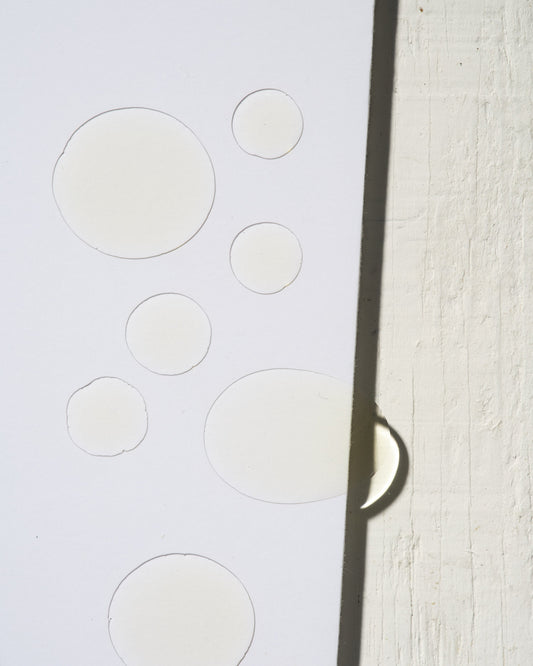When you hear the word “massage,” what comes to mind? One of the most popular images is of a thin, white woman relaxing on a table. “Massage therapy is so often put on a pedestal in a privileged way,” says J Sheffield, a body worker, massage therapist, and sex educator based in Washington, D.C. In popular imagination, “It’s for white, straight cis women to relax.” Of course, this is incorrect: people around the world have practiced forms of healing touch for millennia. But in the contemporary United States, people who are marginalized in some way — queer and trans folks, people of color, people with disabilities and fat people — experience discrimination that can make it difficult to access massage. Professional massage might be financially inaccessible; practitioners might cause racist or transphobic harm; and even well-meaning friends can ignore our boundaries when giving a casual shoulder rub. What’s more, in a patriarchal society — especially one wherein Christian nationalists are systematically depriving trans people and women of bodily autonomy — many of us are taught to see pleasure as shameful. We aren’t given permission to explore touch that feels good. When our consent is violated, we begin to associate touch with danger. As a massage therapist and sexuality educator, J pushes back against these harmful messages. They reclaim massage as a form of self- and community care by centering queer and trans people, offering sliding scale rates especially to folks of color, and facilitating workshops on sensual massage. “Touch can be part of pleasure. Touch can also be in our control,” says J.
We can all learn to give and receive more pleasurable, caring forms of touch.
Whether you’re rubbing a friend’s back or sharing an erotic couples massage with an intimate partner, healing touch begins with active consent and communication.
Ground Yourself in the Present
Mainstream U.S. culture “teaches us to be quiet or shove our needs down,” says J. As a result, when we experience uncomfortable touch, we might wonder: “Do I just grin and bear it and get through it?” We may tense our muscles or dissociate, letting our attention wander away from our body in an attempt to shut out discomfort. In contrast, says J, during massage we can consciously “create a space together that is safe enough to explore and play and find release.” In order to create that space, focus on remaining grounded while giving the massage. Ask yourself: “What do I need to actually be with my body, be with my breath, be with this other person?” Take care of your body before beginning touch. That could look like dimming lights, lighting incense, or simply drinking a glass of water and stretching. When we ground ourselves, we support our massage buddy in staying grounded, as well. Once you’re feeling grounded, encourage your buddy to pay attention to their breath and to feel what their bodies want. Let them “give themselves permission to be the ones in control of when someone starts touching them,” says J.
Work from A Place of Curiosity
As well as you know your massage buddy — perhaps you’re sexual partners or old friends — remember that they know their body best. Your job is to listen to the many ways in which they communicate their boundaries, needs, and desires. Before you begin, ask your massage buddy where they do and don’t want to receive touch. Decide on a safe word that they can use to quickly and clearly communicate. J suggests the “stoplight” system: “Red for stop, yellow for pause, green for go — this is fantastic, keep going.” You should also ask your massage buddy what “stop” means for them. Do they want you to immediately take your hands off their body, or stop that particular motion but retain body contact? Ask your buddy to do a body scan before you begin. They can go through each part of their body and visualize what kinds of touch, if any, feel good there. Do they want their full body touched, or do they only want certain places touched? What kind of touch feels good to them? “Do they like compression? Do they like gentle, kind of feathery touch?” J suggests asking. To start the actual massage, J suggests a simple question: “Is it okay for me to begin touch?” And if so, where, and how? Many of us have never actually been asked whether and how we like to be touched, so that question can feel, frankly, revolutionary. As you massage your buddy, you can experiment with the different forms of touch they identified as potentially feeling good. You can vary amounts of pressure and speed. Observe how your buddy responds verbally and physically. Notice, suggest J, “if they’re clenching or open, if they’re guarding, if they’re trembling, if they’re shaking, if they’re excited.” We tend to think of someone saying “no,” or even “go slower” as a form of rejection or judgment. In reality, says J, no is a gift: “If someone tells me no, that gives me an opportunity to honor their body and that wish, and also to have some fun and explore.” Listening to your partner’s verbal and physical “no” will allow you to find their delicious “yes.”
Celebrate Sensuality in All Its Forms
We tend to associate sensuality with sexual touch. Absolutely, sensual massage can be a seriously hot way to set the mood for other, juicier forms of play. But sensory pleasure doesn’t have to involve genital sex — just as enjoying a delicious meal can be, but usually isn’t, the prelude to a sexy evening. During the pandemic-related lockdowns of the past few years, many of us experienced skin hunger — something J saw among their clients as well. This helped many of us realize how important touch is in our close relationships. Sharing kind touch with loved ones reminds us that care comes in many forms, including and beyond sexual relationships. Practicing affirmative consent during massage encourages us to name and respect our own and each others’ boundaries. Massage is an “opportunity to practice ways of being that the world often does not support or actively tries to prevent,” says J. “A big part of this is becoming better versions and safer versions of ourselves, so we can be in community together.”




















































